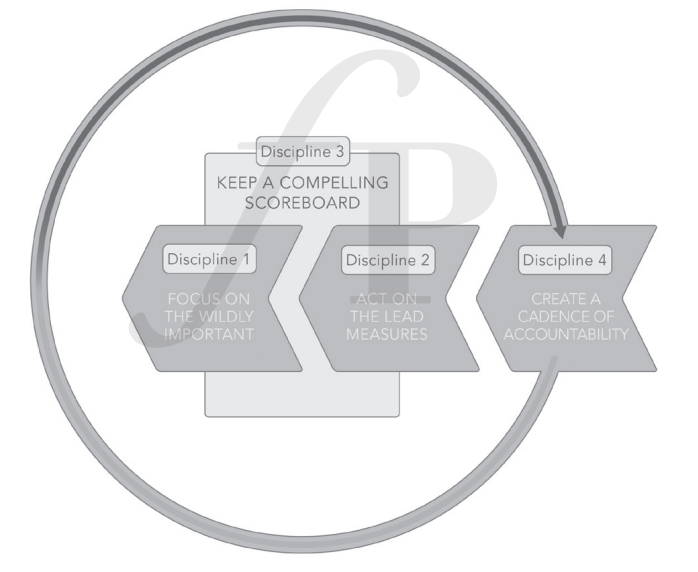My journey with 4DX

Towards the end of Q2 2021, I was introduced to the 4 Disciplines of Execution, codenamed 4DX by the CEO of the Company where I work. In 2 days, it became the anthem, the slogan and even the salutation. My CEO just wanted the teams to produce, and he was determined to get rid of whatever that stands in the way of execution.
The book, 4 Disciplines of Execution; achieving your wildly important goals, promises to help teams execute, it lays claims to increasing output for teams in the Automobile Industry, amongst others. I actually was excited. Until I couldn't find anyone using it for tech. Discipline #3 is: Keep a compelling scoreboard. As a matter of fact, in Q3, all Leads at my Company spent 4 whole work days, trying to come up with good enough scoreboards. Even after this, the results were not impressive.
4DX Execution Principles
In case you haven't read the book, I'll help. 4DX has 4 principles:
- Focus on the wildly important Goal (WIG). This is the most important thing to be done within a specified period. One way to identify it is: if this is not done, can life carry on as normal?
- Act on the LEAD Measures. There are 2 types of measures in this space. LAG and LEAD. LAGs are basically indicators that let you know whether your WIG will be met on the set date. The classic example is a WIG to "lose 4KG in 30 days". Don't ask me if this is possible. A LAG measure is to "Check my weight". At the time when I check my weight, there is absolutely nothing I can do about it. It is already in the past. Which is why 4DX encourages to focus on the LEAD measures. A LEAD measure is influenceable by the owner. In the weight WIG, a LEAD measure could be to "burn 100 calories each day, until the last day of task".
- Keep a compelling Scoreboard. The scoreboard is meant to show the team members and Managers the current position of execution at any instant
- Create a Cadence of Accountability.
Checklist to aid development of the ideal scoreboard
I developed the following checklist to aid development of a somewhat ideal scoreboard
Understand that the WIG is a game, and as a game;
- It shows who is winning
- It shows who is winning and by how much
- It shows what time or session of the game we are currently playing on
- It shows who scored, (moved a lag)
- It shows who scored and at what time
- It focuses of the Leading measures and not on the lags
- We look at the scoreboard and in 5 seconds, we can answer the first 3 questions
- It has a score in number, not percent or ratio
I have attached screenshot (image below) of one of early scoreboards I developed and used for cadence sessions in Q3. The WIG actually completed, but overshot the due date by about 7 days, due to a number of reasons. But I am showing a version that is not complete, so you can see the different states at that time.
Notice that the scoreboard has no score. 😆. How ironic. Well, it was one of the versions. But it has many strengths. Most important: It is easy to see where things are.

Challenges with 4DX
Have I had challenges with 4DX? most definitely. And I'll list them.
- Lack of a reference organisations running it, especially in tech.
- Abuse of the principles. The book actually recommends that the LAGs can be identified well in advance, since they are easy to find; then each week, the team can pick each LAG, based on priority, and at that point decompose the LAG into LEAD measures. Doing so, obviously prevents one from planning too far into the future. Plans which of mostly change and ends up upsetting the balance.
I find that in practice, Managers want to know every detail. They want their Team Leads to plan the entire quarter and represent in one scoreboard, even pen down each team member's name against a task due in 4 weeks. This is abuse, plain and simple. - Reporting. We used JIRA at my place of work, and it is really a great tool. We try to assign tasks to team members that they can complete on the day. However, we hadn't quite figured out how to export JIRA reports into a scoreboard template. So what I used to do is; export the JIRA report to google sheet, and manually edit it. I found this painful and wasteful.
Well, I thought to pen my thoughts on 4DX. I have read the book twice now. I will read it again, and hopefully gain deeper insights. I also wish I came across an article like this when I first came in contact with 4DX.
Let me know your thoughts. Cheers!!!
Member discussion